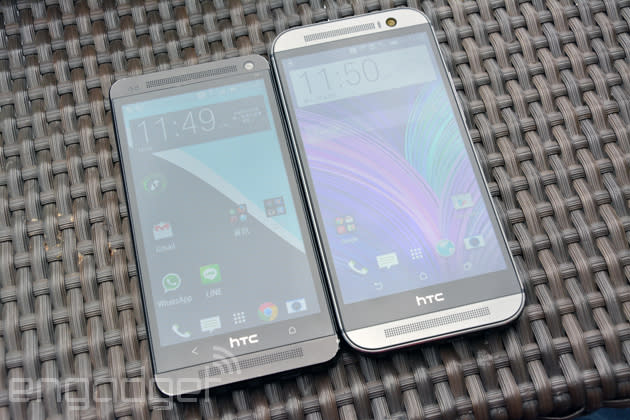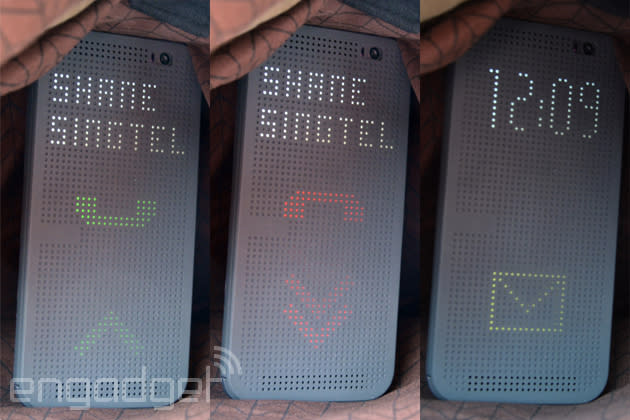HTC announces the new One with depth-sensing camera and larger screen

Under the hood, you're looking at a 2.3GHz Snapdragon 801 and 2GB of RAM. Basically this phone will laugh in the face of almost any task you throw at it. Edit photos, put together video montages, play taxing 3D games -- this thing should churn through it all with ease. As far as storage goes, you've got two options: either 16GB or 32GB. But if you feel that's not enough, there's a microSD slot for adding up to 128GB more. Plus, Google is throwing in 50GB of storage on Drive for two years, replacing Dropbox. Unless you're truly abusive to your gadgets, there's no way you should run out of room to store stuff. A sizable 2,600mAh battery keeps the whole thing chugging along for an estimated 20 hours of talk time or, with the new Extreme power saving mode enabled, 40 days of standby. Regardless, it's a nice, but smallish boost from the 2,300mAh one found in last year's model. And, of course, the expected set of radios and sensors are on board, including Bluetooth 4.0, dual-band 802.11ac WiFi, AWS compatibility, LTE, NFC, an accelerometer, gyroscope and barometer.

Of course, the two big unique features from last year's model make a return here: the front-facing stereo speakers with BoomSound and the UltraPixel camera around back. But both have been given significant upgrades for 2014. The speakers are connected to a new dedicated amplifier and a more powerful DSP chip. They're also seated deeper in the phone's chassis, which should lead to richer, louder audio with better-defined low-end sound. The UltraPixel shooter around back is, for all intents and purposes, the same exact camera as last year. The sensor is the same 4-megapixel backside-illuminated one with giant 2µm pixels, but there's a new imaging processor attached and HTC has ditched the optical image stabilization tech. But, it's also added a second camera to the back in what it's calling a Duo Camera array. Truth be told, the second "camera" isn't actually a camera in the traditional sense; it's a depth sensor. It allows the One to perform all sorts of neat tricks especially in post processing, such as blurring backgrounds or changing the focus point like a Lytro.

No new flagship phone would be complete without a significant software update, and HTC isn't going to let you down. At its core, the One is running Android KitKat 4.4, which means it's got all of the latest enhancements straight from Google. On top of that, however, it's running Sense 6.0, which includes BlinkFeed and a heavy focus on themes. Several of its primary UI elements have been given subtle redesigns that bring a more modern and open look. Perhaps most exciting though, BlinkFeed has been opened up to developers, who will be able to push information to your feed. For example, Foursquare will be able to publish lunch recommendations or Fitbit can send you activity-tracking data. Interestingly, the company has also broken several of its proprietary apps free of its firmware, such as Zoe, which will find itself on the Play Store soon. That will make it much easier to push updates to users, which means features will be available much quicker.

Most of the tweaks are relatively small, but Motion Launch is a pretty significant new feature. When the phone senses movement, it "listens" for prompts to launch particular apps or actions. For example, swiping right on the screen will take you straight to BlinkFeed; holding the volume rocker while turning the phone into landscape mode launches the camera; and you can answer a call simply by putting the phone to your ear -- all without unlocking it first. The Dot View case, seen above, extends those features, by allowing you to tap the case twice to receive notifications without turning on the phone's display.
The new HTC One will be available in three colors (gunmetal gray, glacial silver and amber gold) starting today, March 25th.
Richard Lai and Brad Molen contributed to this report.
















































